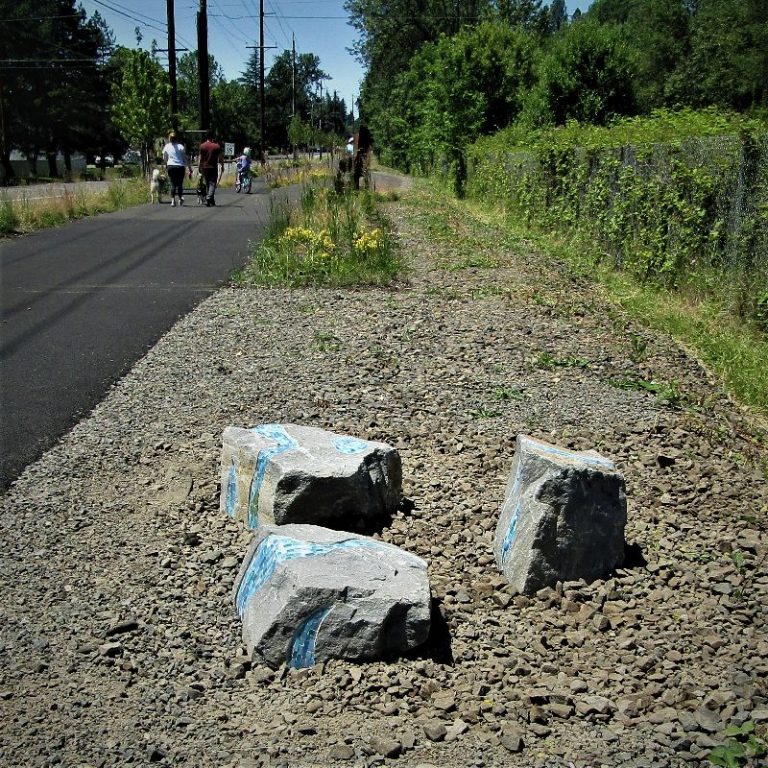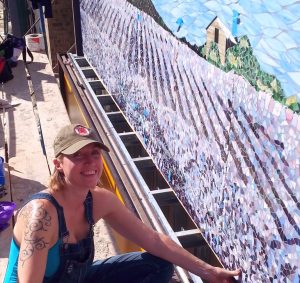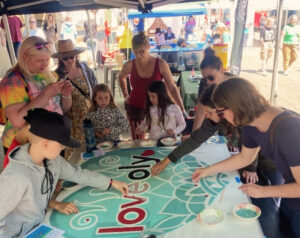In 2020, I installed seven basalt boulders, inlaid with glass mosaic, onto three locations along a new walking-biking path in Tigard, OR. Watch a video about the project here: https://youtu.be/AQmyaWB4b3Q
This path follows the original train tracks that brought freight to the area, which led to the development of the Tualatin Valley community. The City of Tigard received a grant from the National Endowment for the Arts to place artwork along this 3/4 mile path, with the goal of highlighting the story of this land and railroad that is usually not told. There are steel structures installed along the trail, designed by architect Suenn Ho, which tell the stories of several figures who have contributed to the growth of the area at different times in its history. Two other artists were also commissioned to create artwork on the trail, muralist M.J. Lindo and metal sculptor Christine Clark.
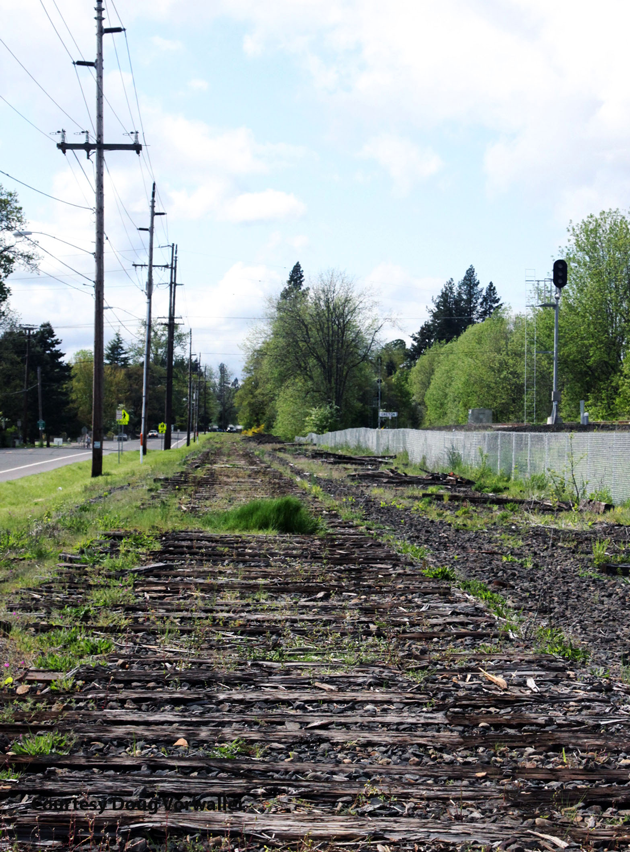
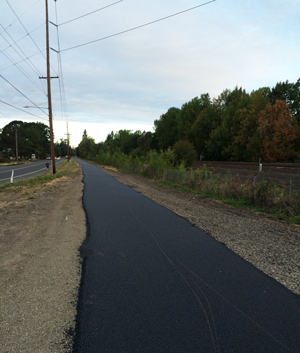
As I developed a design for the trail, my first inclination was to create something structural, as the path is very flat and straight. It begged for raised, 3D objects for visual interest. I also thought of the many people I know with mobility issues who might not walk 3/4 of a mile without a spot to stop for a rest. So, my initial goals were functional: to create something that could be sat on, used to stretch, or for kids to climb and hop on.
Next, I researched the history and geography of the Tualatin Valley, and read the stories of people who would be featured along the trail. One phrase that jumped out at me came from a teacher in the Kalapuya tribe, now part of the Confederated Tribes of Grand Ronde. He referenced the importance of “Earth, Wood and Water.”
For a long time, I became absorbed in the Cash Family of Hillsboro. John Cash was a former slave who brought his family to the Swiss community of Hillsboro and taught at the local school at a time when, as you might not know, African American people were not legally allowed to live in the state of Oregon. I really expected to create a bench that featured images from this story. *Find more on this story at the Washington County Museum in Tigard. Also online here: https://washingtoncountyheritage.org/s/wcho/page/home It’s a great resource!

However, I was drawn back to the foundational elements of life for the aboriginal people of the region, which is where the story starts, and a concept was developing in my mind: to carve inlays into basalt boulders with flowing blue mosaic suggesting water swirling and cascading down the sides. This idea felt graceful and achievable with a very short project deadline, and as I learned more about local rock, plants and animals, an image became clear. My proposal was finalized in January 2020, with a June deadline. At the time, I had other projects scheduled for spring, and three workshops out of state, so I was having panic attacks and was very worried that I might not be able to meet the deadline.
And then, of course, the pandemic happened. My calendar was wiped clean and it was imperative that we all try to stay home if possible. I had managed to move the boulders up to my driveway in the nick of time. I found a local stone carver who came out and painstakingly carved out the inlays based on sketches I made onto the rock. He was done just as the stay-at-home orders commenced, and I was able to focus on setting the mosaic. I added images of Wapato and Camas, two flowering plants that were food staples for the Kalapuya.
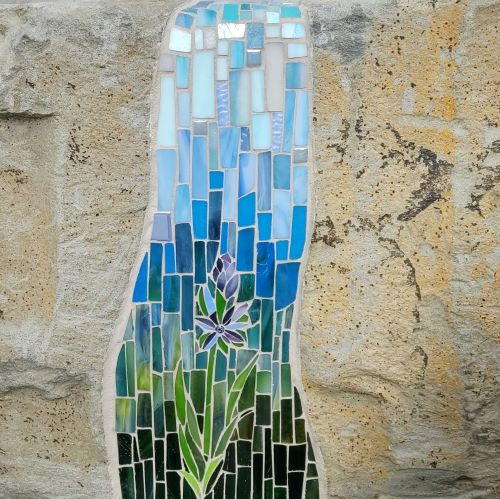
I included a White Oak leaf and acorn, as this continues to be an important tree in the region:
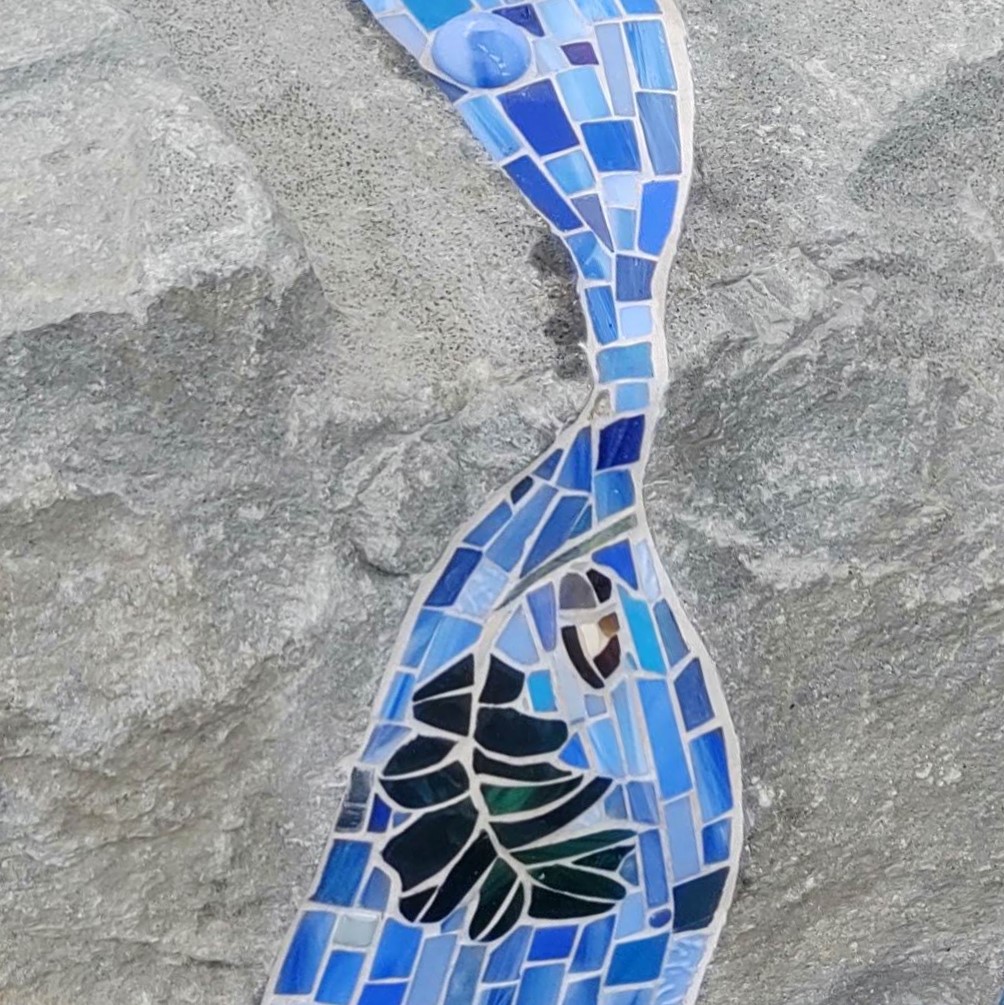
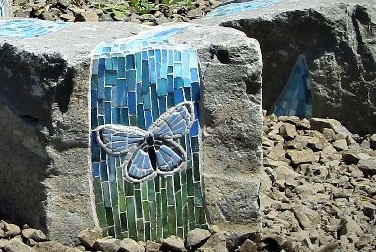
My favorite is this Fender’s Blue Butterfly, which glows in the dark!
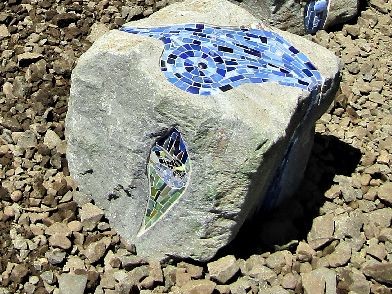
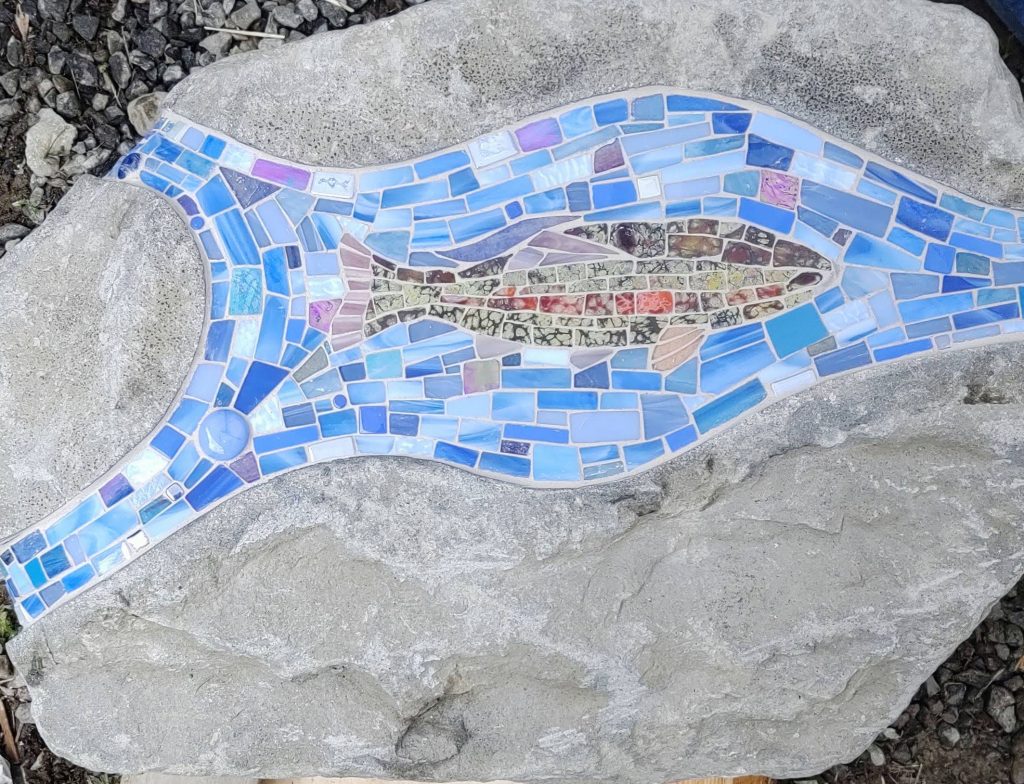
Here is a collage of the three sites; two clusters of 3 boulders and one “bench”, and a shot of me at the very end of a hard few days.
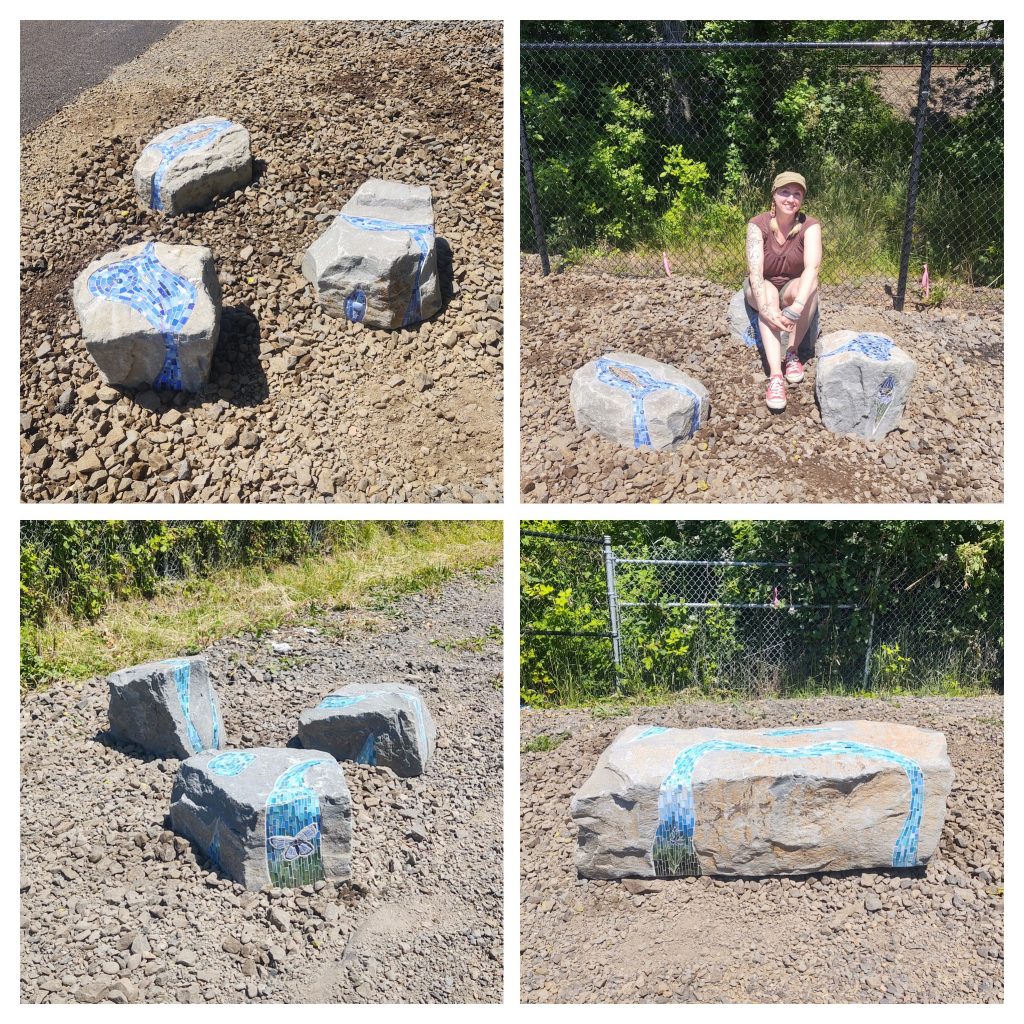
I want to acknowledge some people who made this possible:
First and foremost is my intrepid spouse, Mike. Another silver lining (for me) of the pandemic is that he had to work from home all spring and could help me move the rocks, and timing worked out such that he was able to accompany me on most of the trips to drive rental trucks and help navigate everything. He is more logical than I am, and helped with problem-solving and heavy lifting. Having his help with the final placement of the boulders was vital. It was a very hard day, and I don’t know that I could have hired someone who would have put themselves through that.
Next is Ed Salerno, the stone carver who worked with me to get the inlays made. He was very easy to work with and I hope to collaborate with him again. If you are in the Olympia area, I recommend taking a trip to Tenino to visit the Tenino Stone Carvers studio. They are part of the legacy of the town and their work is beautiful.
Paul Luttrell, the Portland rep for Laticrete, was (as always) a great resource. He brainstormed with me to make sure the mosaic was set into the rock using the best methods so they’ll be durable and last forever.
It was a pleasure to get acquainted with the Tualatin Valley Creates program, which offers some really great resources for the Portland creative community. If you live in that area, you should check it out. They created a lot of online programs for everyone staying home to flatten the curve. Many thanks to Raziah Rouchan, the Executive Director of Tualatin Valley Creates (and a professional artist herself) and to Schuyler Warren, Senior Planner for the City of Tigard. If you have only passed through Tigard on your way to another place, take a turn on Main St. sometime to check out their downtown. The City has been working to cultivate a vibrant downtown, with cute shops and cafes, and they are building it through a focus on art and diversity.

